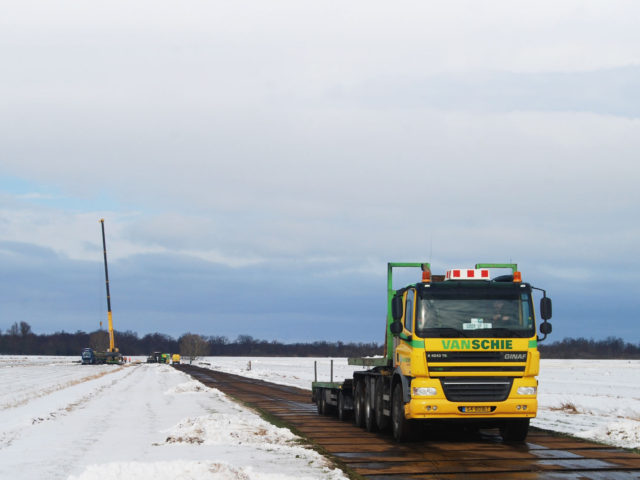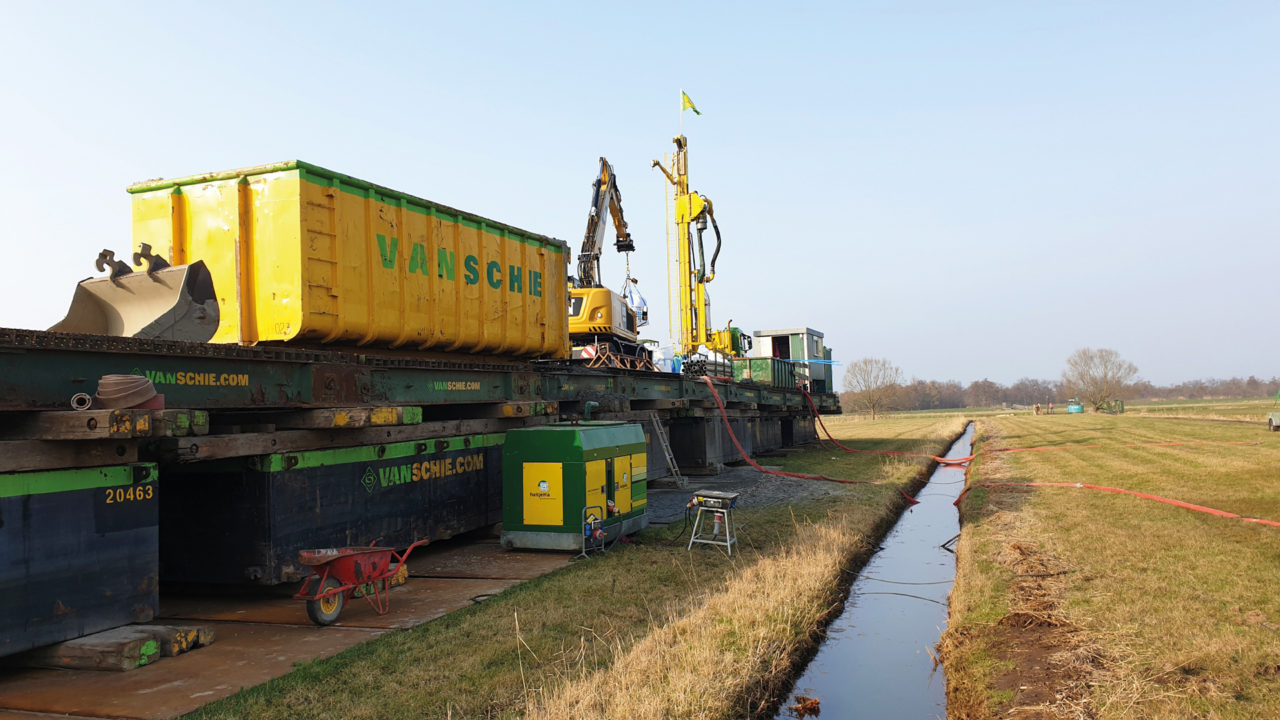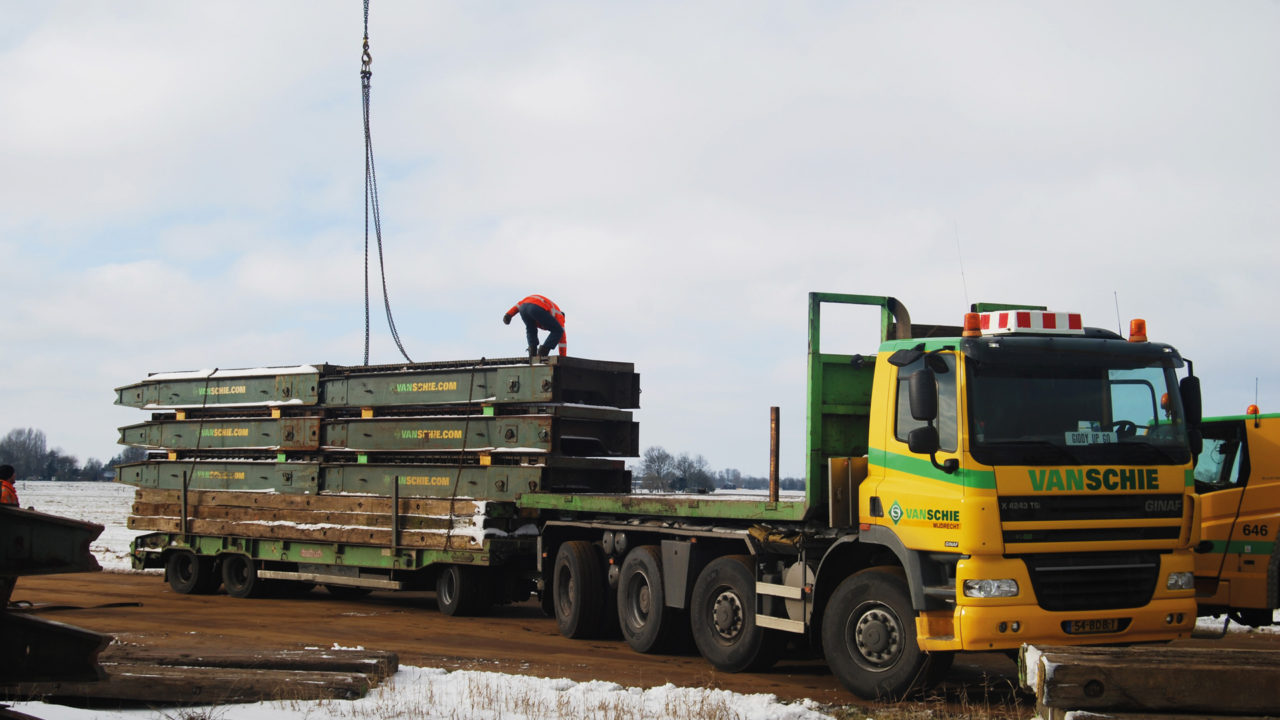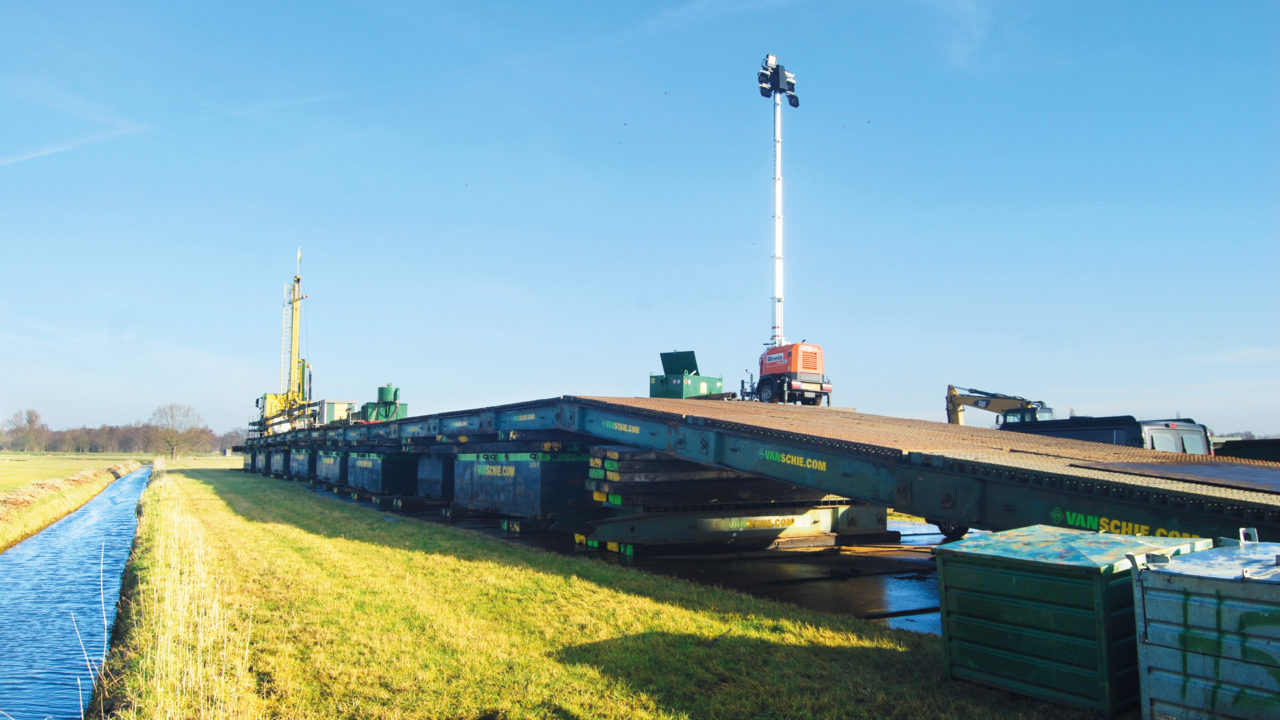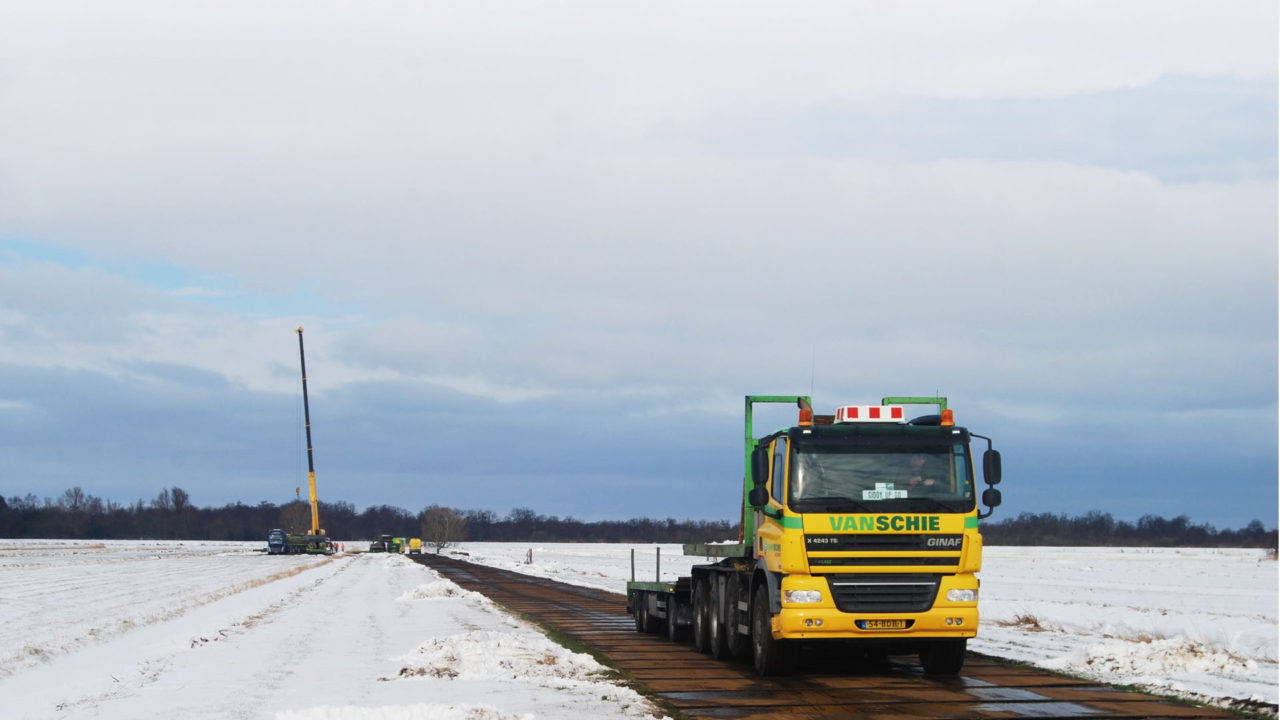The flatbed trailers and other heavy equipment had to pass over that to reach the intended construction site smoothly and safely. The spot where Van Schie was to build a drilling rig, somewhere deep in the meadows of the Horstermeerpolder.
The Horstermeerpolder has a problem. The polder suffers from extreme salinization. This is bad for agriculture, industry, drinking water and nature. While the water in the other polders and natural areas in the area is fresh, brackish seepage water is increasingly rising in the Horstermeer.
The salty groundwater is old seawater that entered the subsoil when the sea had free rein here some seven thousand years ago. The polder itself is 2.5 meters below sea level.
And underneath that polder is a big bubble of brackish water. Especially in the center, it is already surfacing in the ditches. Waternet, the company that produces drinking water not only for the wider area but also for the city of Amsterdam, recently developed a revolutionary method for turning this brackish water into clean drinking water. To find out if this works, test wells are now being drilled.


